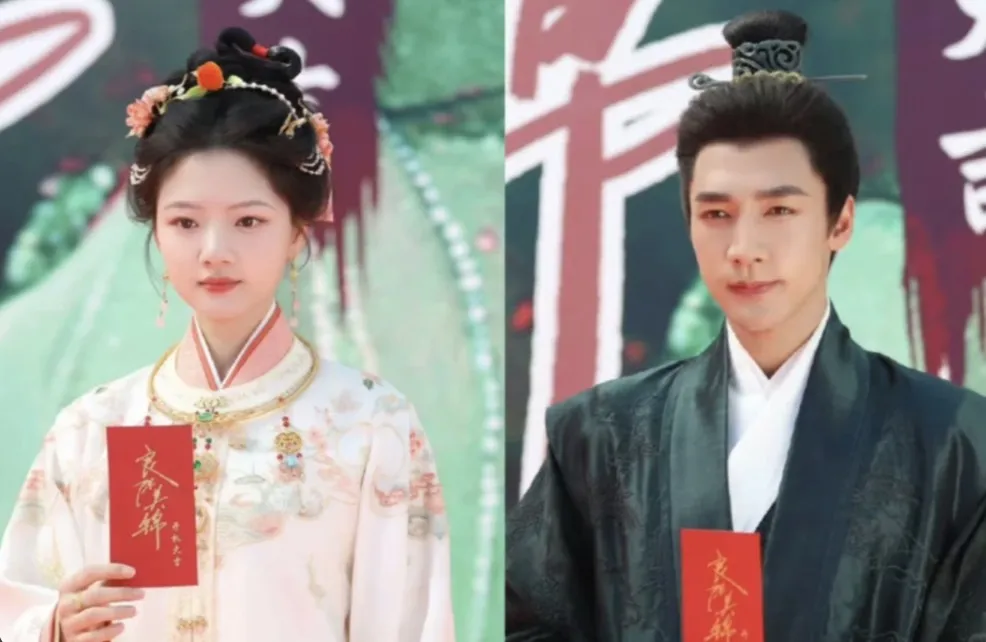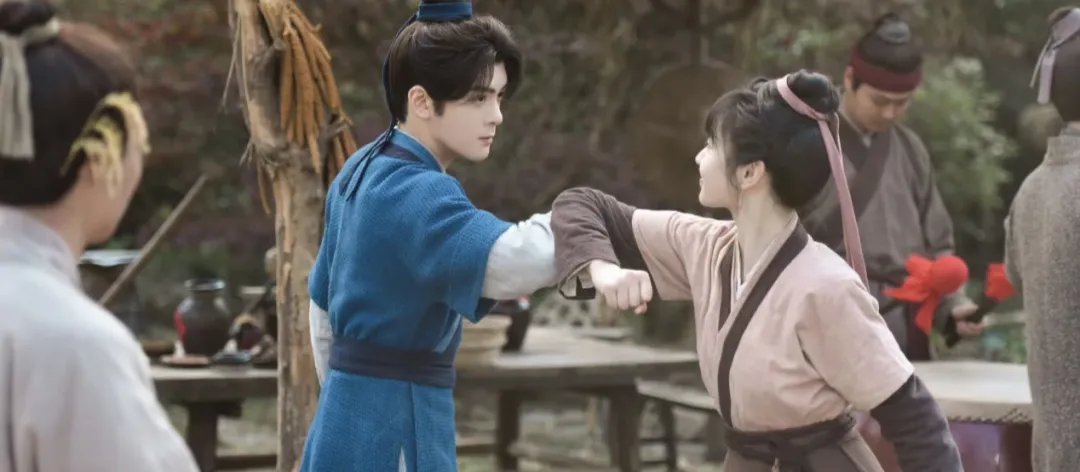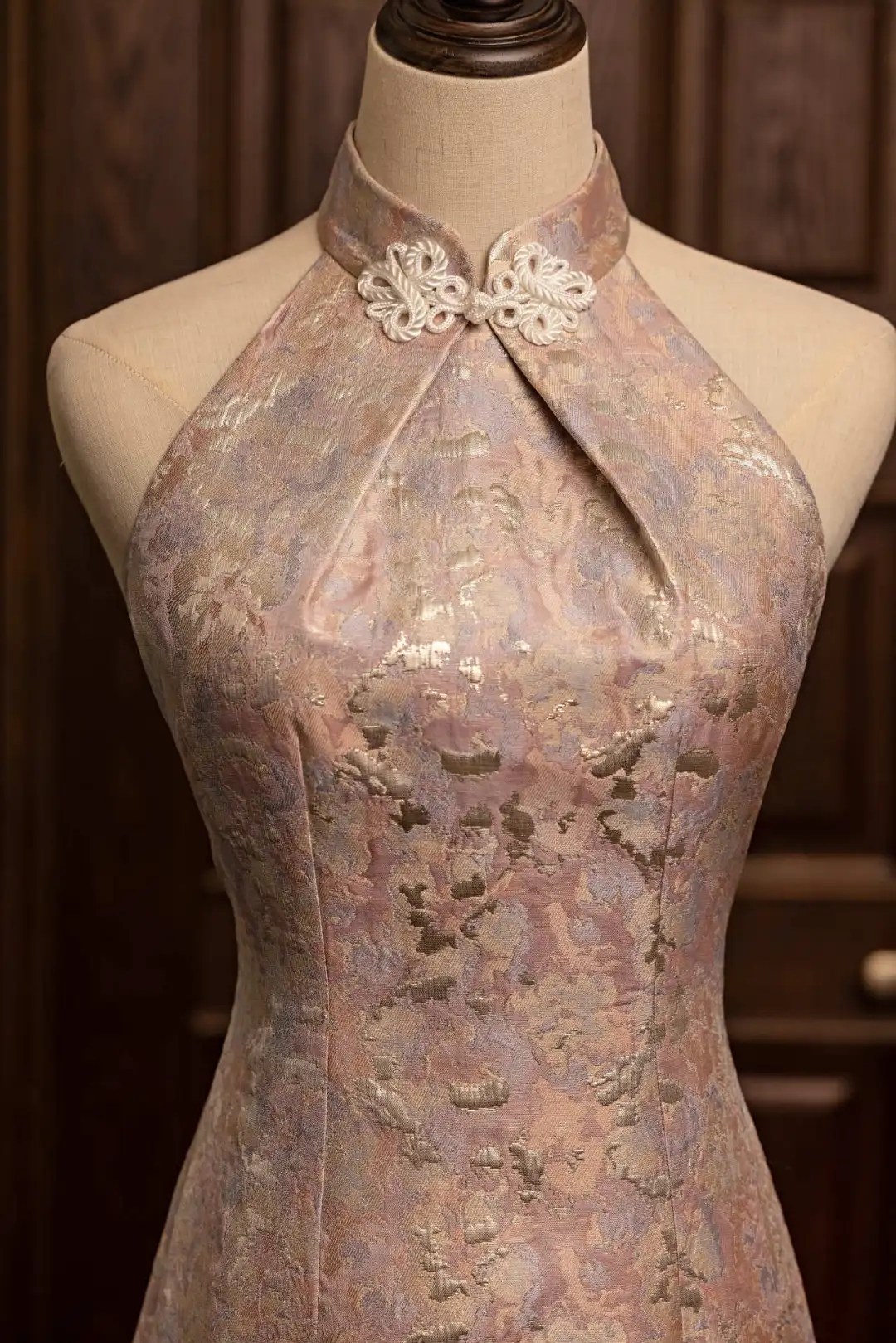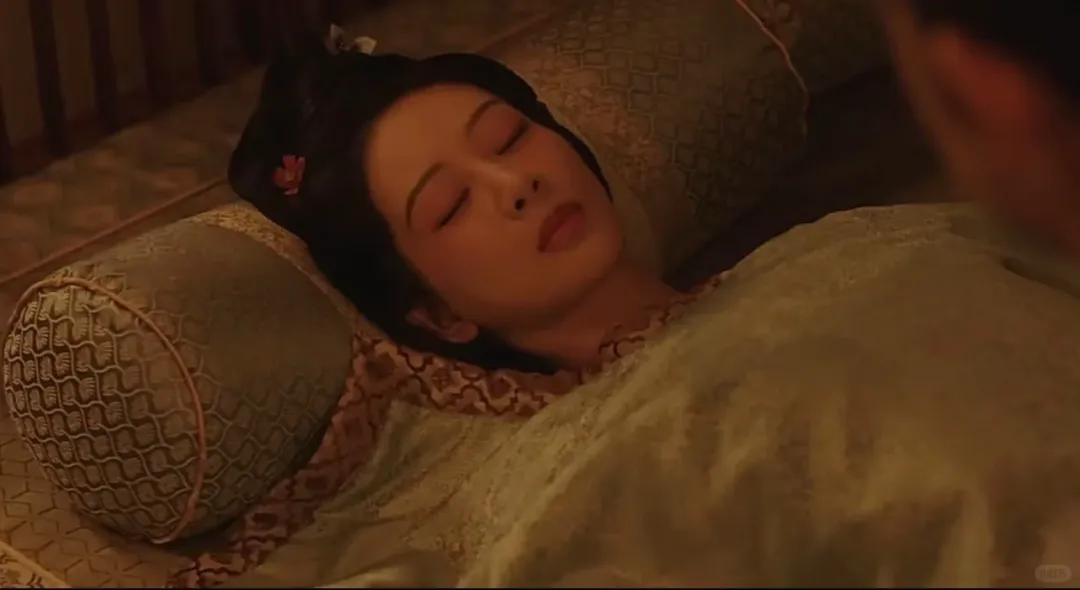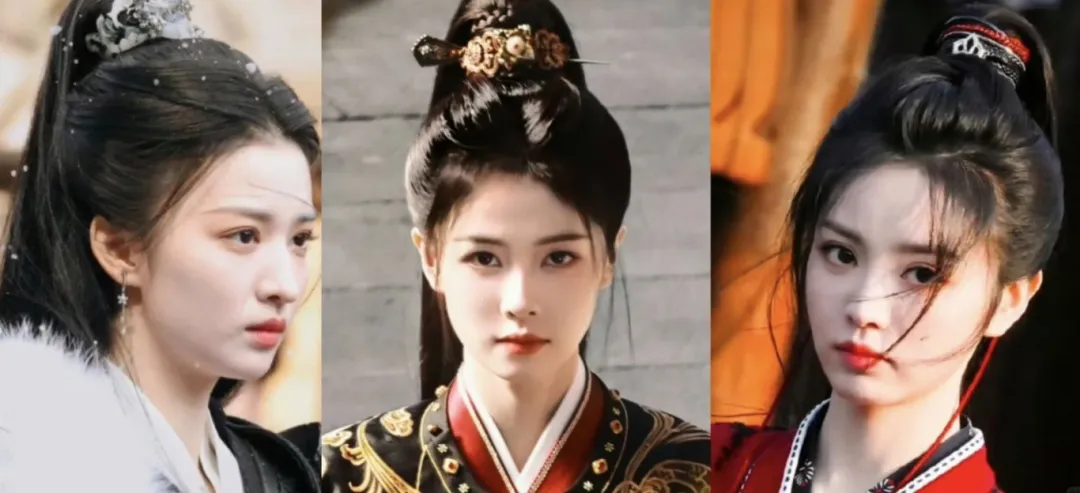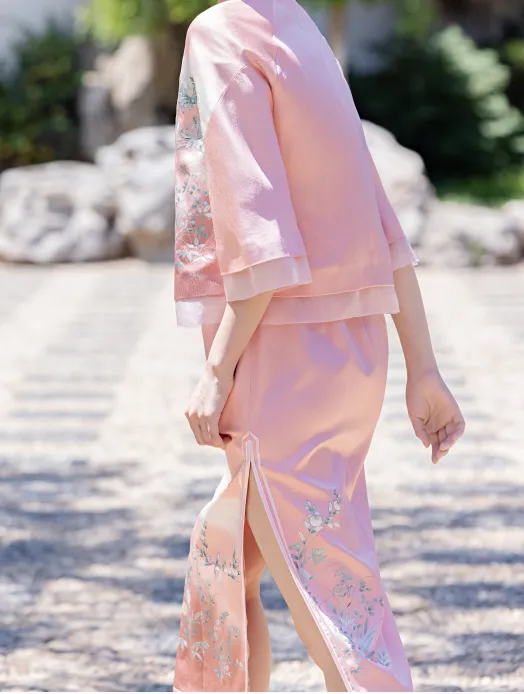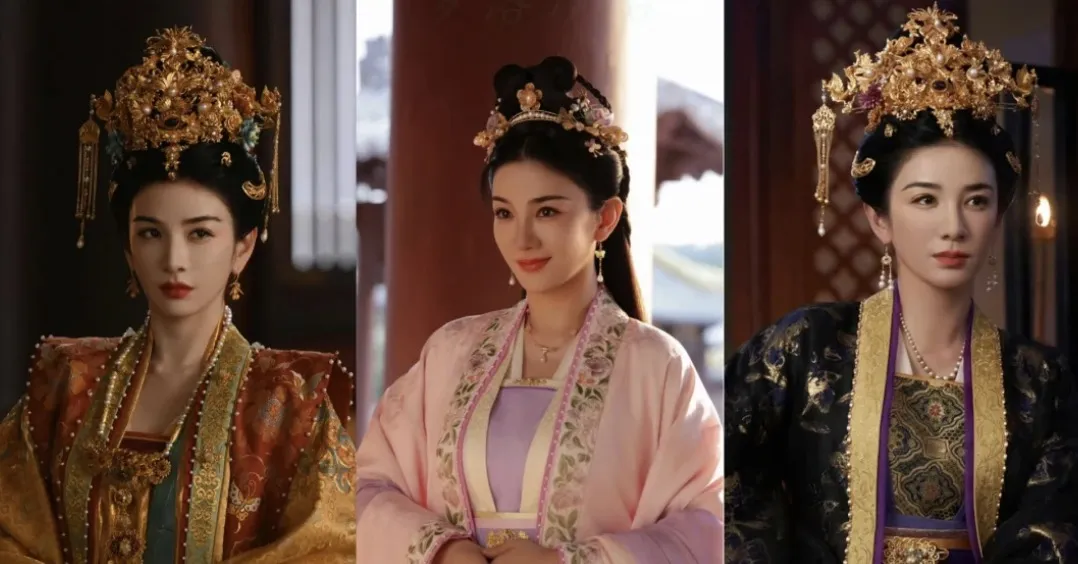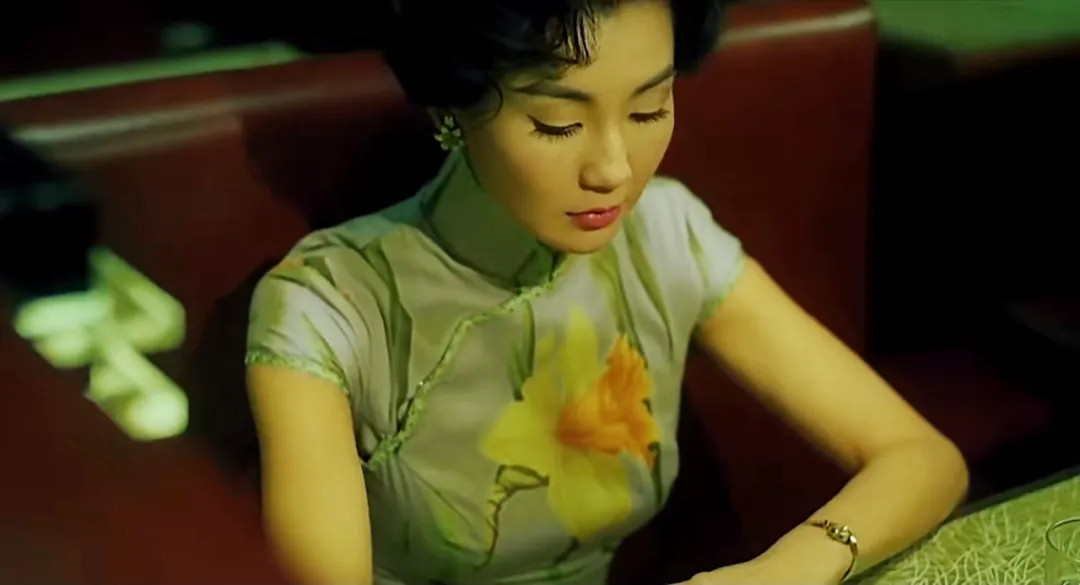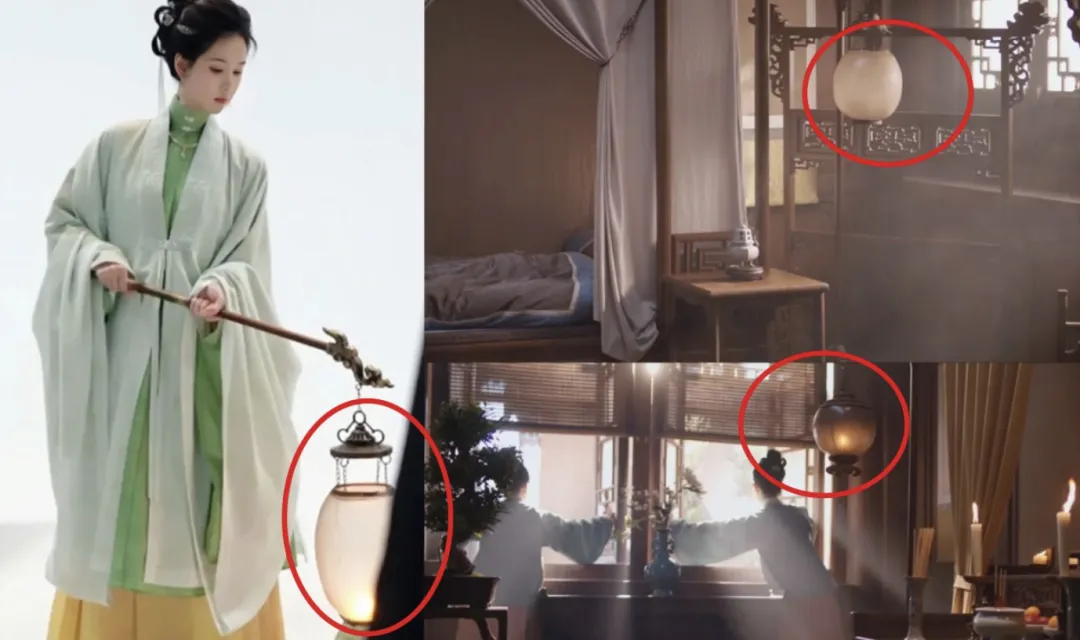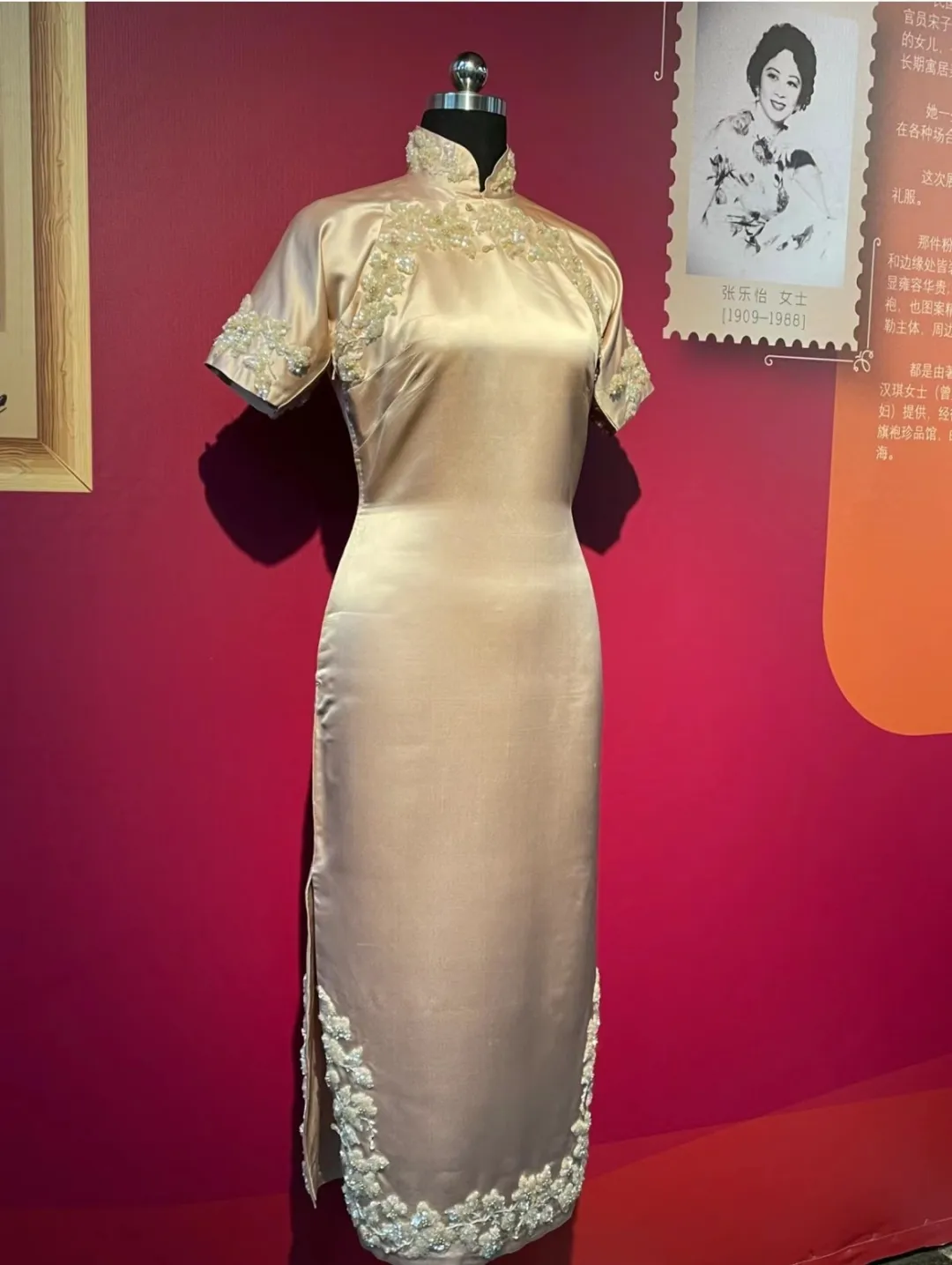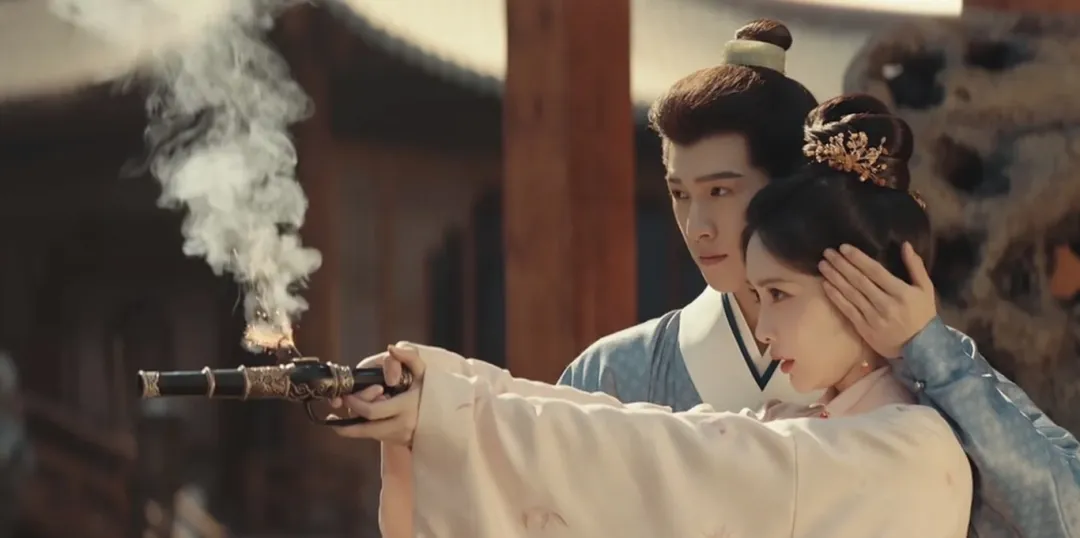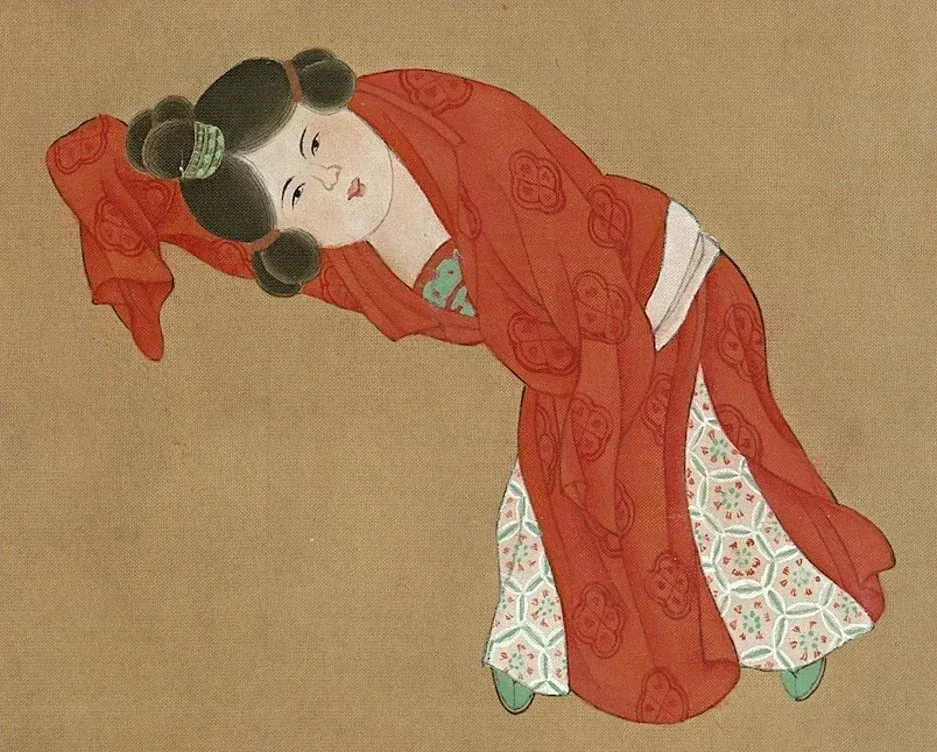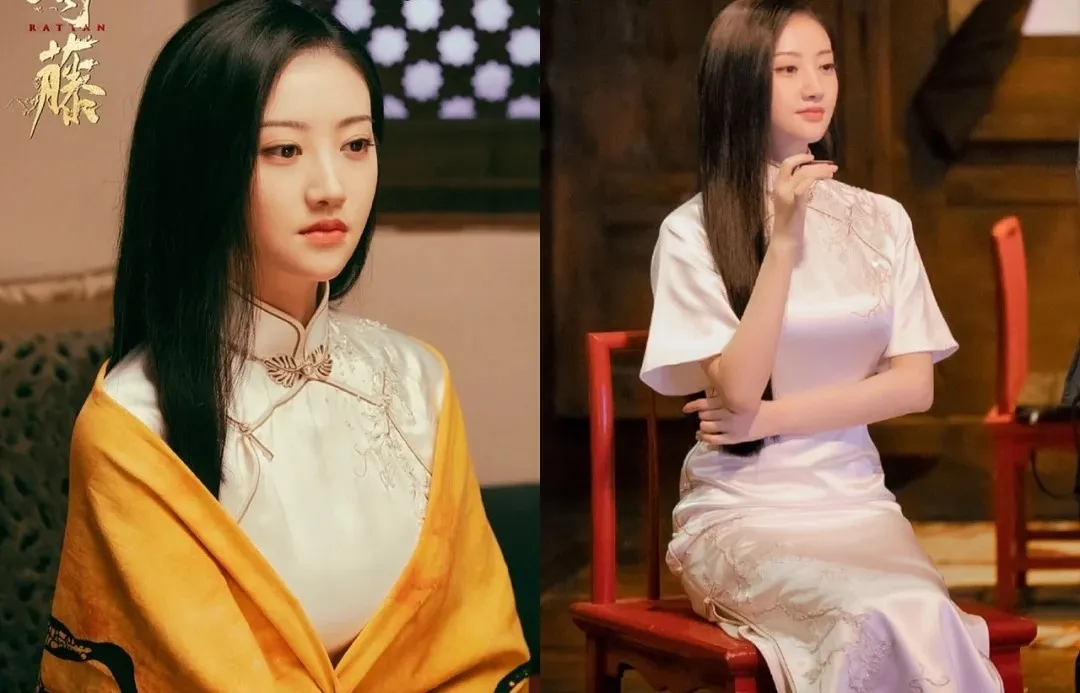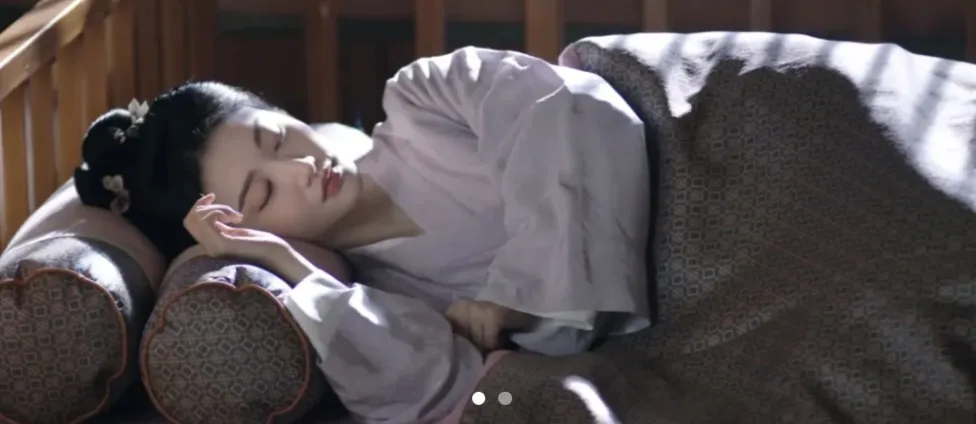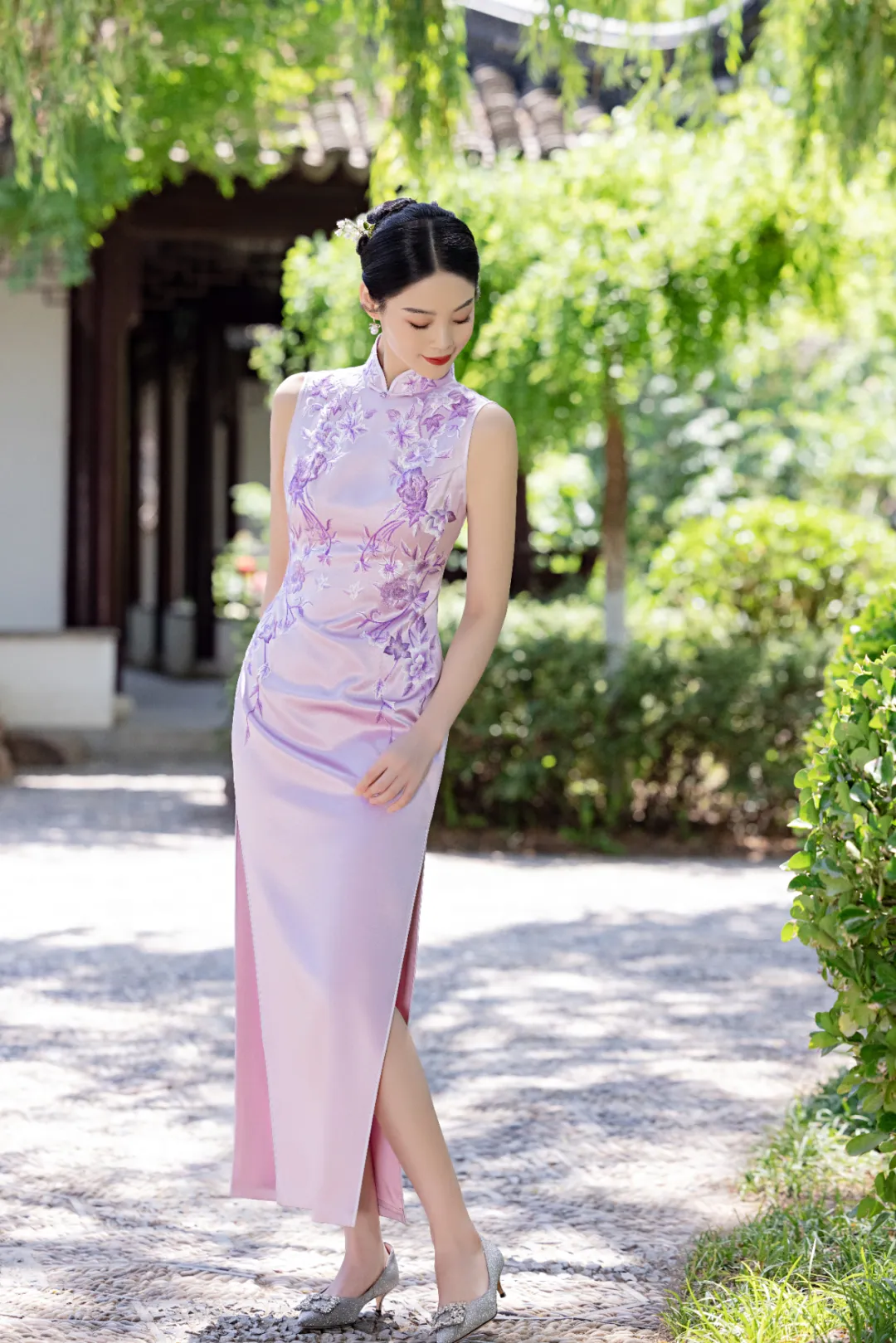Article
搜索结果:
-
Ushering in 2025 with Fashionable Cheongsam Colors
New year, new look, countless fresh things are coming towards us. Now, what we can do is to seize the joy and creativity they bring. So today, we will start a new chapter based on the annual color trend and introduce the new styles and trends for next year, not for you to follow blindly, but to offer better and more inspiring beauty for our new year. Pantone's 2025 Color of the Year: Soft Peach The most authoritative color institution in the world, Pantone, announces the "Color of the Year" at the end of each year. The 2025 Color of the Year is "Soft Peach", a gentle hue between pink and orange, exuding an ambiguous, warm and romantic atmosphere. Laurie Pressman, vice - president of the Pantone Color Institute, said: "We've seen the growing importance of community. People around the world are re - evaluating what kind of lifestyle they want and what's most important. We want to convey the power of care, accompany our loved ones closely, regain a sense of comfort and security, or unite people and enrich each other's souls." Soft Peach represents a warm vision of love, with a bright, soft and light charm. It also… -
How to Choose Qipao for Lantern Festival
The Lantern Festival, as the last important festival in the Chinese Spring Festival customs, is an ancient festival that has lasted for more than two thousand years. In the ancient Chinese calendar, the first lunar month is called the Yuan month. According to Shuowen Jiezi, "Yuan" means the beginning, and "Xiao" means night. The 15th day of the first lunar month is the first full - moon night of the year, a time when everything begins anew and spring returns to the earth. So, this day is called the Lantern Festival, also known as the Shangyuan Festival. Since there is a custom of hanging lanterns on this day, it is also called the Lantern Festival. There are also some religious origins among its many meanings. In Taoist culture, as recorded in Dream of the Liang Record written by Wu Zimu in the Song Dynasty, "The 15th day of the first lunar month is the Yuanxi Festival, the time when the Heavenly Official of Shangyuan bestows blessings." In the Southern Dynasties, Imperial Decree of Emperor Yuan of Liang also recorded that "Shangyuan is the time when the Heavenly Official bestows blessings; Zhongyuan is the time when the Earthly Official pardons sins;… -
Explore the Types of Cheongsam Plackets
In the structure of a cheongsam, there are two crucial elements. One is the collar, which is like the prologue, and the other is the placket, our topic today. The placket is like a door to the cheongsam, with different ways of opening. Some are gracefully winding, some are simply delicate, some are straightforward, and some hold hidden mysteries. As an important part of the cheongsam, it serves as both a dividing line for the overall layout and an unignorable decorative aesthetic in cheongsam design. We often see that it complements and continues the collar, piping, and buttons. It exquisitely showcases the sophistication and uniqueness of traditional clothing culture and plays an important role. Today, let's explore the various types of cheongsam plackets, their characteristics, shapes, and the suitable wearers, so that we can more accurately choose a cheongsam that can be worn for a lifetime in the future. Placket Culture The concept of "placket" in traditional Chinese clothing culture dates back to the Shang and Zhou dynasties. Since then, daily robes have commonly used the open - placket style, mostly with a right - lapel design. In the concept of "respecting etiquette and forming clothing" in Chinese civilization, the… -
Ren Min's Ming-style Costumes in New Cdrama
Recently, the new drama A Good Match for Chen and Jin starring Ren Min and Ci Sha started filming. Netizens directly called out the costumes they wore, saying, "These clothes are so bad. Change them quickly!" Why did netizens say so? The costume style of this drama is in the Ming Dynasty style. In Ming-style costumes, the most important aspects are the clothing pattern, texture, and the allowance. The pattern can only be seen when the clothes are laid flat, so the most obvious thing recognizable to the naked eye is the allowance issue, which directly affects the clothing pattern. The allowance here refers to the "total sleeve length". Some formal wear patterns pay attention to "the sleeve should reach beyond the wrist when the arm is bent back". That is, when cutting, there should be enough room for the arm to bend, so that the sleeve length won't be affected when the arm is bent. When the wearer bends their arm, this kind of sleeve will present a beautiful streamline. Previously, the costumes in The Ninth Purple were criticized by netizens. The clothes basically had no allowance, making the person look big-headed and small-bodied, with completely uncoordinated proportions. The… -
Did Ancient Times Have Realistic Wig Technology?
In historical Cdramas, we often come across women sporting exaggerated and voluminous hairstyles, like the Ming-style makeup in When the Wild Geese Return and the Tang-style makeup in The National Beauty and Fragrance. Netizens can't help but wonder: Did ancient people really have such astonishing hair volume? The answer is no. It wasn't necessarily that ancient people naturally had thick hair. In reality, their hair density might not have been as depicted in films and TV shows. Instead, they wore wigs, known as "Yiji" (义髻) in ancient times, which were the forerunners of modern hairpieces. The trend of wearing wigs started among upper - class women. Their goal was to add volume and create more elaborate hairstyles, similar to today's hair extensions. The materials for Yiji were diverse. It wasn't limited to human hair (which was costly) but also included thin wood shavings, horsehair, etc. Generally, Yiji were made from hair or wood - based substitutes. For example, the lacquered wooden wig unearthed from the Astana Tombs in Turpan, Xinjiang, is a standard 'Single - Blade Half - Turned Chignon'. It's made of wood, painted black, and decorated with white - painted flowers, auspicious clouds, and phoenixes. The base has… -
Did Ancient Commoners Really Only Wear Coarse Linen?
Do you also think that commoners in ancient times, like those portrayed in historical dramas, mostly wore coarse linen clothes? You might not know that ancient people also had a few decent outfits for special occasions such as festivals, visiting relatives, or attending weddings. Some have asked why we don't discuss commoners' clothing, assuming the articles only focus on noble styles. People might wonder, 'Could commoners really wear silk or gold in daily life?' There's actually some misunderstanding here. In ancient times, many trends originated among the nobility and later spread to commoners, while some crafts improved among commoners and rose to popularity among nobles. So, there was no absolute rule. Here's the conclusion: ancient clothing styles were quite similar (except for some impractical wide - sleeved designs). What people wore mainly depended on the occasion—for grand ceremonies or rituals, they would prepare finer attire. The quality of clothing was reflected in the fabric, craftsmanship, and vibrancy of colors. Another factor was occupation. Laborers wore durable clothes like hemp garments, but not all commoners worked in fields, so coarse linen wasn't universal. In the Ming Dynasty, for example, the silk industry thrived in Jiangnan (江南), and even ordinary people wore… -
Explore the Chinese Color - Hidden in Cheongsams
Just as Tagore described, "Every open rose brings me the greetings of that rose in the eternal spring." And as Bei Dao interpreted spring precisely, "This is spring, the wildly beating heart disturbs the floating clouds in the water." What is really disturbed? Is it the heart, or the long - awaited desire to embrace beauty after a dull winter? So, in today's issue, inspired by color - matching in dressing and using beautiful cheongsams as materials, let's explore the amazing color - matching in the eyes of cheongsam designers, which we can apply in our daily outfits. Light Colors Main color: 80% Ningzhi White (凝脂白) + 20% Apricot Yellow. This is an extremely gentle cheongsam. The warm - toned color scheme is skin - brightening and elegant, perfect for women to decorate themselves sensually. The main color, like condensed milk, comes from the traditional Chinese color Ningzhi White, which matches the charming luster of silk. It echoes Bai Juyi's famous line in "Song of Everlasting Sorrow": "In spring's cold she bathed in the Huaqing Pool, the warm water smoothed her creamy skin." The matching yellow magnolia embroidery takes the rich yellow tone of ripe spring apricots. The stronger the… -
Explore the Ancient Chinese Blankets
Have we been using blankets wrong all these years? In cdramas, the blankets we commonly see are rectangular, similar to what we use today. However, in the TV series Guo Se Fang Hua, Yang Zi's blanket with a unique cut - out design is quite impressive. When pulled up, it snugly covers the shoulders, providing a sense of security. This kind of blanket dates back to the Warring States period, making it a 'classic design'. In contrast, traditional rectangular quilts, though warm, often expose the shoulders because of their straight edges. During seasonal changes and cold winters, shoulders are vulnerable to cold drafts. The ancient concave - backed blanket has an ingenious design. Its tailored cut - out ensures the shoulders are well - covered, offering both comfort and excellent insulation. It's astonishing that this practical design, now seen as innovative, was adopted by our ancestors over two thousand years ago during the Eastern Zhou dynasty. Auspicious Embroidery The ancients loved embroidering auspicious patterns on blankets. The Warring States blanket used ancient lock - stitch embroidery with paired dragon and phoenix motifs in deep blue, emerald blue, red - brown, vermilion, and yellow threads. This is similar to the pattern… -
Why Are Heroines in Cdramas Always Using Same Ponytails?
It's unclear when it started, but almost all heroines and heroes in ancient - costume dramas now sport high ponytails, and the 'armor battle - damaged makeup' trend has also become popular. Netizens point out that high ponytails can actually hit the face during martial arts practice, which is quite painful. The mass replication of high ponytails and battle - damaged makeup not only risks causing visual fatigue but also likely puts pressure on makeup artists and stylists to create unique variations. Let's revisit the costume drama styles of 50 years ago. The most classic is arguably the image from A Touch of Zen. In 1970, actress Xu Feng starred in A Touch of Zen, which catapulted her to fame and established her cold yet glamorous 'heroine' persona. Her character design featured a high bun, often paired with a headscarf or hat. Over her 15 - year screen career, she appeared in about 50 films, all as a heroine. This sleek attire and hairstyle conveyed an independent, self - reliant, and powerful image. Looking at other classic films, heroines rarely wore ponytails. Even with updos or half - updos adorned with accessories, the styling showcased distinct personalities while still emphasizing… -
A Showcase of Summer Qipao
The beauty of summer Qipao lies in the allure of silk and satin. The encounter with the scents of gardenia and jasmine marks an unforgettable start. Summer, a vibrant and colorful season, has finally arrived. Although the heat can be tough for many, it's nothing compared to the richness and beauty this season brings. For women who love Qipao, summer is the perfect time to display its inherent charm. Today, let's explore the beauty of Qipao suitable for summer. Song Jin and Su Jin If fabric is the essence of a Qipao, then a Qipao made of Song Jin (宋锦) is a living embodiment of rich historical and cultural heritage. It dates back to the Song Dynasty, telling the story of that era's splendor and the remarkable weaving craftsmanship. A Song Jin Qipao is an excellent choice for summer. With its firm yet soft texture, elegant patterns, and classical allure, the wearer exudes artistic charm and noble grace. Take this Song Jin Qipao as an example. Its unique, classical floral print is eye - catching. The straight - cut silhouette with wavy edges adds a touch of playfulness, while the bold peony motifs in soft camel and light purple create… -
Slits in Cheongsams: The Secret of Chinese Sensuality
It's time for another session of sharing cheongsam details. In previous issues, we've talked about the types of handmade frog buttons on cheongsams, the collar and sleeve styles, and the exquisite front - placket patterns. Today, I'd like to discuss the slits, which play a crucial role in the overall design of cheongsams. Don't underestimate this small detail. A tiny slit can present a variety of charming female moments. A smaller slit results in smaller steps, making the posture and gait automatically slow and elegant. A larger slit offers a stronger sense of fluidity, and the faintly visible legs bring out the charming rhythm of the cheongsam. The slits in cheongsams are like opening the door to the sensuality of Chinese clothing. However, this sensuality is not the straightforward Western - style one. It is based on Chinese female culture and the generally reserved and implicit nature of Eastern women. Through a small opening, it slowly releases the rhythm and charm of female beauty. Next, let's talk about the common types of cheongsam slits, as well as their respective advantages and characteristics. Before that, here's a little knowledge about slits. In the early Republic of China, cheongsam slits were actually… -
The Gorgeous Beauty in Old TV Dramas
Who understands! There was a kind of resplendent beauty in old TV dramas. When I was a child watching period dramas, I was always amazed by the large phoenix hairpins and the dazzling golden ornaments on the characters' heads. It fulfilled the imagination of grandeur and nobility. Why is this style less common in modern dramas? Let's start with the conclusion. This style of wearing numerous hairpins was particularly representative of the late Tang Dynasty, with its origins traceable back to the Southern and Northern Dynasties. The late Tang period witnessed unprecedented extravagance in women's hairstyles and attire, often described as 'explosively stylish.' Literary descriptions further deepened our imagination of ancient women's hair ornaments. For example, Emperor Xiao Yan of the Southern and Northern Dynasties wrote in 'Song of the River,' 'Twelve rows of golden hairpins on the head, five - patterned silk shoes on the feet.' Tang poet Shi Jianwu also noted in 'Makeup Removal Poem,' 'Under the lamp, I gaze again at the bronze mirror, vainly inserting twelve rows of golden hairpins.' The popularity of such intricate hair ornaments was due to the Tang trend of high buns. The larger the hairstyle, the more hairpins were used. Thus,… -
Su Lizhen: A Peak in the History of Chinese Cheongsam
Today, let's continue our special topic on In the Mood for Love and appreciate the beauty of Maggie Cheung's cheongsams. Before delving into the topic, let's talk about the behind - the - scenes details of this movie. Maggie Cheung changed into 23 cheongsams in In the Mood for Love, all designed by the Hong Kong art director Cheung Shu - ping himself. Some of the cheongsam fabrics were his personal collections over the years, and the patterns and fabrics were already out of print. So, it's almost an eternal regret that it's impossible to recreate Su Lizhen's beauty exactly. Then, these cheongsams were handmade by Hong Kong master Leung Long - kwong, who has over sixty years of experience in cheongsam making. As he said, "I've never changed my profession in my life. I earn money with my heart." For these 23 cheongsams, Cheung Shu - ping was mainly responsible for design, color matching and sourcing fabrics, while Leung Long - kwong was in charge of measuring the body, cutting and sewing. It can be said that without the seamless cooperation of these two masters, there wouldn't be this world - renowned Chinese masterpiece. The emergence of In the… -
Why Are There So Many White Lanterns in Cdramas?
Why are there so many white lanterns in dramas like Yan Hui Shi, which references Ming Dynasty costumes? Even during festivals, white lanterns dominate. Isn't it considered unlucky to hang white lanterns at home? Let’s start with the conclusion. In traditional Chinese lantern culture, lanterns come in various colors, and white lanterns are one of them. Many ancient paintings depict white lanterns used in celebrations and rituals. People believed that lighting white lanterns at night could dispel darkness and convey blessings and good wishes. During festivals, households would hang white lanterns to express hopes for future happiness and prosperity. In daily life, white lanterns were also used for illumination, while other colored lanterns served as decorative accents. When lit, white lanterns emit a soft yellow glow, making them a common sight in ancient paintings. In Ming Dynasty-inspired dramas, aside from geometric-shaped lanterns (square, round, triangular) or those resembling animals and objects, we also see unique designs like horn lanterns, crimson gauze lanterns, and boneless lanterns. Among these, horn lanterns are one type of 'white lanterns' we often see. Similar lanterns include those made from sheep horn or the more expensive rhinoceros horn. Though they appear white, they are closer to… -
A Review of Cheongsams Worn by Zhang Leyi
Recently, I've been reading A Treasury of Cheongsams Worn by Chinese Aristocratic Families written by Song Luxia and Xu Jingcan. This book is set against the backdrop of those Chinese aristocratic families that once shone brightly and endured on the historical and political stage. The cheongsam, as the central element throughout this backdrop, is like a cultural micro - cosmet of China's upper class. Through its owners, it reveals the clothing culture, aesthetic trends, humanistic features, and craftsmanship of the last century. The book showcases 90 old cheongsams worn by famous ladies from Chinese aristocratic families. As the authors said, "They are a rare, non - renewable, and endangered collection of specimens of Shanghai - style old cheongsams." These cheongsams represent the highest level of Shanghai - style cheongsams in the last century. The two authors and many colleagues spent a great deal of effort collecting and displaying these cheongsams. It's not just about reviewing and presenting the appearance of national clothing culture but also a challenging task of racing against history and time to rescue more buried, forgotten, and neglected clothing cultural treasures. So, today, let's follow the context and characters in the book to explore the beauty of… -
Firearms in Ancient China
In the ancient - costume drama Yan Hui Shi (雁回时), when Zhuang Hanyan took out a fire - arm, I bet many people's hearts skipped a beat. Netizens wondered, "Where did Yanzi get this fire - arm? Did she borrow it from Fan Xian and Fan Ruoruo?" Actually, fire - arms have appeared in other TV shows like The Longest Day in Chang'an 2 and The Ninth Purple. Let's start with the conclusion: Our ancient ancestors were not only kind - hearted but also very cool. Fire - arms were first created in the Yuan Dynasty in China, evolved from the fire - lance of the Southern Song Dynasty. They were the world's earliest tubular metal shooting firearms. Yes, by the Ming Dynasty, China had already entered the age of firearms. At this time, you could shout, "My lord, the times have changed!" During the Yuan Dynasty, the technology of firearm casting had reached a high level. Metal barrels, usually made of bronze or iron, could be produced for firearms. Before Zhu Yuanzhang established the Ming Dynasty, fire - arms were already the main weapon in production. After the founding of the Ming Dynasty, the production of fire - arms… -
When Qipao Meets Traditional Chinese Red
When Qipao meets traditional Chinese red, each piece is a true masterpiece! The fusion of gardenia and jasmine scents creates an unforgettable beginning. Today, I’m sharing about red Qipao. Among all colors, red is undoubtedly the star of Qipao. It's not only associated with wedding attire but also deeply rooted in China's historical and cultural symbolism. Red embodies the soul of Chinese culture, symbolizing auspiciousness, celebration, eternal brightness, warmth, hope, vitality, and prosperity. In Chinese history, the five colors—white, blue, black, red, and yellow—were linked to the Five Elements (metal, wood, water, fire, earth) and virtues (benevolence, righteousness, propriety, wisdom, trust). Starting from the Zhou Dynasty, red was revered as a symbol of power and nobility, gradually becoming a staple in both royal and common households. By the Tang and Song Dynasties, red was widely adopted in daily wear and weddings. In the Tang Dynasty, the fourth - rank officials wore dark crimson, and the fifth - rank officials wore light crimson. The popular colors at that time were crimson, purple, bright yellow, and green. The combination of crimson and green was commonly used for women's clothing, and this color scheme was also applied in weddings, with grooms in red… -
The Diverse Charm of Qipao Beauties, How Could She Be Missing!
In previous features, we discussed the unsurpassable peak in Qipao cinema history—In the Mood for Love. Today, I want to focus on Qipao appearances in TV dramas, highlighting those classic moments where Qipao beauties shone. Each of these beauties has her unique charm, and the Qipao they wore were equally distinctive. In the vast ocean of Qipao styles, external beauty is secondary; the key lies in wearing the Qipao with personal flair and character. First, let's talk about a widely recognized Qipao beauty from recent years—Jing Tian in Rattan (2021). Her portrayal of a vine spirit, set in the Republican era, featured numerous Qipao styles that redefined elegance. The satin Qipao, primarily in pearl white, with its high side slit, atmospheric connected shoulder sleeves, double-round front placket paired with delicate piping and inlaid silk hard flower buttons, exuded both nobility and grace. It was not only light and smooth but also convenient for movement. Paired with Jing Tian's long hair like satin, it combined sexiness and cold beauty. The lace-embellished Qipao in pale blue highlighted her delicate features. The lace perspective showed the female's graceful figure in a hazy and implicit way. With exquisite bead embroidery printing and a small… -
Why Are the Pillows in Period Dramas So High?
Isn't It Uncomfortable? In period dramas, we often see these hard pillows. Even in museums, most pillow artifacts are made of wood or ceramic, making one wonder if they were truly this uncomfortable. The answer is that ancient pillows came in various forms, including silk, cloth, ceramic, wood, and even jade. However, softer pillows like silk or cloth ones didn’t preserve as well, so most surviving artifacts today are hard pillows. The Chinese character for 'pillow' (枕) has a 'wood' radical, suggesting that early pillows were primarily made of materials like wood or dried grass. The ancient text 'Shuowen Jiezi' defines a pillow as 'a support for the head during rest.' Some also used stones as pillows, especially in hot summers, as the coolness could relieve discomfort. As living standards improved, pillows diversified. For example, a silk pillow was unearthed from the Han Dynasty Mawangdui Tomb—a soft pillow! This rectangular pillow, embroidered with 'longevity patterns,' was stuffed with Eupatorium leaves, known for their aromatic and medicinal properties. The pillow’s ends were adorned with raised brocade, and its sides featured fragrant silk embroidery. This wasn’t just a silk pillow but also a medicinal one, proving that nobles had access to soft… -
The Beauty of Cheongsam Skirts in the Wind
When the wind blows the hem of the cheongsam, the swaying figure is truly beautiful. Today, I'd like to talk about the cheongsam skirt, that is, the skirt style of the cheongsam. Why this detail? Because when we choose a cheongsam, we must pay special attention to it. Selecting a skirt that suits us, looks good, and has a strong modifying effect is the key to choosing a cheongsam. When choosing a skirt, options like A-line, wide swing, fishtail, straight tube, and various lengths can be dizzying. So today, I'll discuss the different styles of cheongsam skirts, their characteristics, and which body types they suit. Straight Skirt The straight skirt is the most common basic style in cheongsam patterns. It features a straight-up-and-down design. The H-shaped vertical effect makes the skirt fall straight and neatly, making the cheongsam look extra long, upright, and slender. This is why most people choose straight-skirt cheongsams. It suits all body types, has a daily style, and can be worn on various occasions, with a natural sense of dignity. There are usually three lengths for straight skirts. The first reaches the calf. This length is more convenient and daily, with less of the cheongsam's charm…



